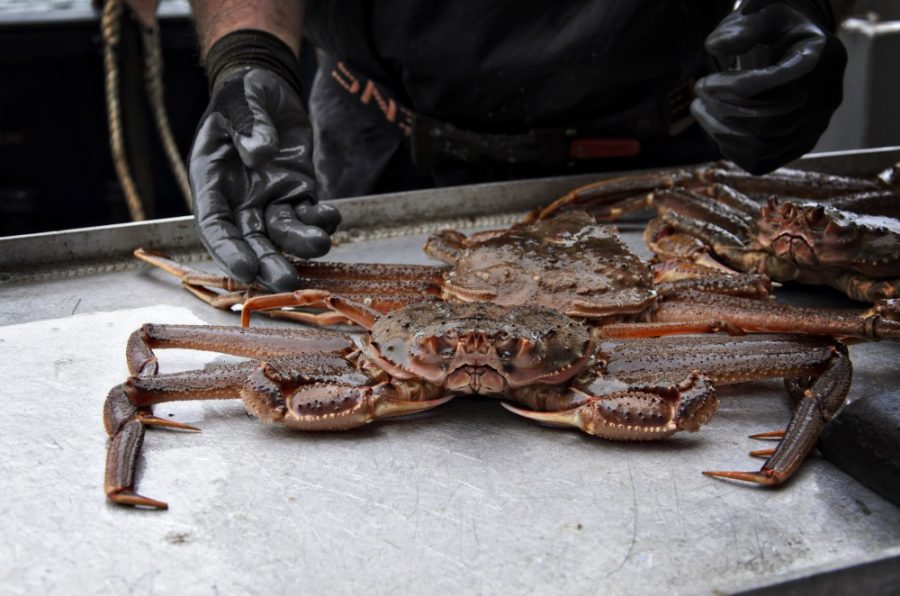Three’s Company
The Nobel Committee announced Monday that three scientists were award the Nobel Prize in Physiology or Medicine after discovering “therapies that have revolutionized the treatment of some of the most devastating parasitic diseases,” according to the committee.
The three are William Campbell, Satoshi Ōmura and Youyou Tu. Campbell and Ōmura were awarded this distinction for creating Avermectin, a drug that with the derivative of that drug, Ivermectin, was able to almost eradicate filariasis, the cause behind elephantiasis. Tu developed Artemisinin, a drug that helped lower the death tolls associated with malaria.
These advances will be felt around the world, as parasitic worms afflict nearly a third of the world’s population, and malaria kills more than 450,000 people each year.
Antarctica has crabs
Take your eyes off them for one moment, and King Crabs can get in a whole lot of trouble. A new study states that these crustaceans that call the depths of the ocean and in particular the seafloor home, have taken a page from the avian playbook and trekked south.
Richard Aronson, head of the department of biological studies at the Florida Institute of Technology has tracked the blossoming crab population. These adventurous aquatic daredevils have made their way to the continental shelf, but have yet to venture further due to their aversion to waters that cold, according to Aronson. Cause for concern arises in the notion that as Antarctica’s waters grow warmer due to climate change, these crusty crabs could eventually venture further onto the shelf, potentially upsetting the marine ecosystem which consists of echinoderms and mollusks.
“If they get up onto the continental shelf they will draw down those populations that have lived in isolation from these kind of predators for probably a very long time,” said Aronson in an interview with Live Science.
Joaquin in Memphis (or maybe ‘Joaquin in the Rain’)
There’s a reason that the East Coast received a little more rain that usual this past weekend
Hurricane Joaquin has made its way northeast along the Atlantic seaboard. But for the past few days, the various models that make up the National Hurricane Center’s forecasting have been all over the map. Literally. Some projected the hurricane to be seen in Bermuda, North Carolina or as far north as Maine. But as of late, the official forecast now has Joaquin heading out to sea, a prediction that the European model anticipated but the U.S. model did not. The trouble is, this isn’t the first time the models have clashed, and it won’t be the last.
The European model correctly predicted the path of Hurricane Sandy, which the U.S. model did not. This most recent divide is the icing on the cake for meteorologists who have been advocating for improvements in the American system of forecasting for quite some time.
“The G.F.S [Global Forecasting System, run by the National Weather Service] is still quite inferior,” said Cliff Mass, a professor of atmospheric sciences at the University of Washington in an interview with The New York Times. “We are a clear third [behind the European and British models].”
Cold as ice
A “frozen zoo” at the University of Georgia’s Regenerative Bioscience Center, or RBC, is on the horizon. The university plans to construct this genetic storage facility in the hopes of preserving endangered species.
The process is quite simple: After an animal is sedated, cells from the skin are obtained and can be made be made into stem cells through specialized reprogramming genes, according to researchers. Once that is completed, the stem cells can be made into sperm or eggs.
As of now, the team is focusing on big cats because they have a better understanding of their biological makeup. They have already been hard at work, having collected skin cells from a Sumatran tiger previously euthanized at the Atlanta zoo in 2010, and a clouded leopard that died in 2013.
A member of the RBC, Franklin West is optimistic about the frozen zoo’s progress, citing the longevity of genetic material as well as the easy storage of prospective populations as precursors for success.
Lobbying for the environment
On Thursday, the Obama administration adjusted Bush-era emission standards by presenting a new regulation that has people pleased but wanting more. The former standard was set at 75 parts per billion, originally set in 2008. Last week’s tightening was set to 70 parts per billion by the Environmental Protection Agency. But while this shows progress in the right direction, it wasn’t exactly what was expected by parties hoping for legitimate change.
The E.P.A’s scientific panel had previously suggested changing the standard to between 60 and 70 parts per billion, but the Obama administration settled on the high end of that suggested spectrum, and produced one of the more expensive regulations in history, coming in at nearly $1.4 billion annually.
Despite lower suggestions, the decision became reality after a year of lobbying from leading business and manufacturing organizations citing the closing of factories and power plants if standards were set too high. The new rules associated with the regulations include requiring owners to invest in cleaning technology for smokestacks, which will clean out polluting chemicals.
Follow Daniel Burkart on Twitter.









